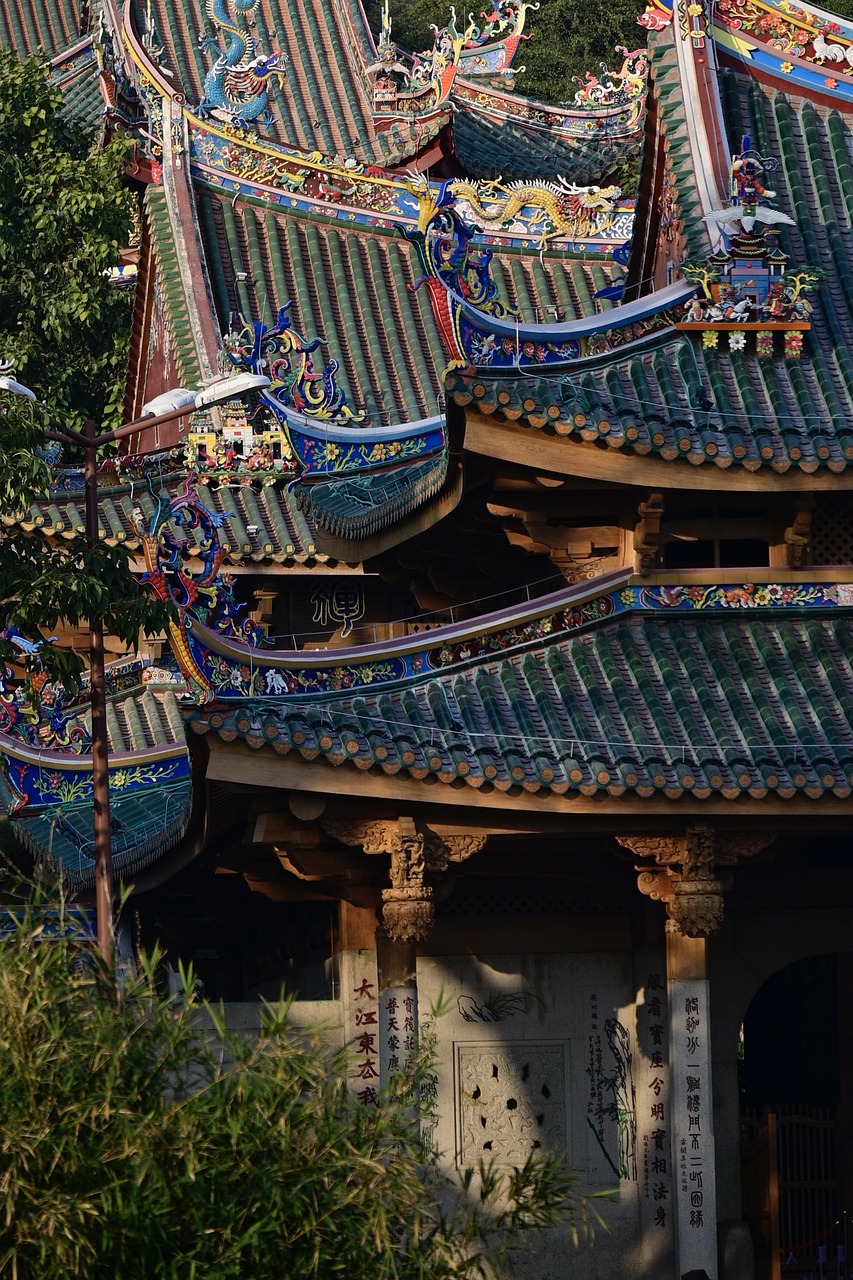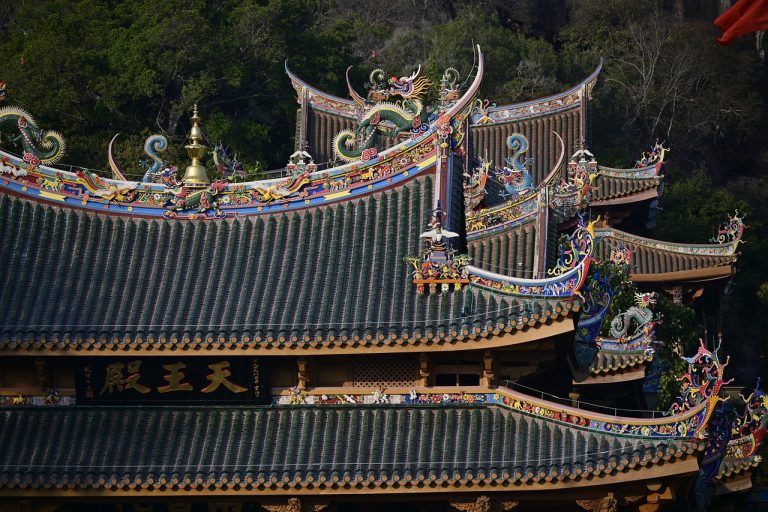Xiamen China Video
Historical Landmarks of Xiamen China: A Deep Dive
Xiamen, located in the Fujian Province of China, is a city rich in history and cultural heritage. As one of the major ports of China, Xiamen has witnessed the rise and fall of dynasties, the influence of foreign powers, and the development of trade and commerce. In this article, we will explore the historical landmarks of Xiamen, taking a deep dive into the fascinating stories behind each site.
Xiamen China Image 1:

Section 1: Gulangyu Island
Gulangyu Island, also known as Piano Island, is a picturesque destination that showcases the fusion of Eastern and Western cultures. The island is a UNESCO World Cultural Heritage site and is famous for its colonial architecture, lush gardens, and beautiful beaches.
- Gulangyu Piano Museum: This museum houses a collection of over 80 pianos from different periods, including rare vintage pianos and pianos once owned by famous musicians. The museum offers a glimpse into the musical history of the island.
- Sunlight Rock: Rising 92.7 meters above sea level, Sunlight Rock is the highest point on Gulangyu Island. It offers panoramic views of the island and the surrounding sea. Visitors can climb to the top and enjoy the breathtaking scenery.
- Shuzhuang Garden: This seaside garden is known for its unique rock formations, pavilions, and terraces. It features a beautiful piano-shaped pond and is a peaceful retreat for visitors.
Keywords: Gulangyu Island, Piano Island, Gulangyu Piano Museum, Sunlight Rock, Shuzhuang Garden
Xiamen China Image 2:

Section 2: Nanputuo Temple
Nanputuo Temple is a Buddhist temple located at the foot of Wulao Peak in Xiamen. With a history spanning over a thousand years, this temple is considered one of the most important Buddhist sites in Southeast China.
- Main Hall: The main hall of the temple houses the statues of Buddha and Bodhisattvas. The intricate wood carvings and colorful decorations create a serene and sacred atmosphere.
- Vegetarian Restaurant: Nanputuo Temple has a vegetarian restaurant that serves delicious and healthy vegetarian dishes. Visitors can enjoy a meal while immersing themselves in the peaceful ambience of the temple.
- Library: The temple’s library is home to a vast collection of Buddhist scriptures and rare books. It is a valuable resource for scholars and those interested in Buddhist philosophy.
Keywords: Nanputuo Temple, Main Hall, Vegetarian Restaurant, Library
Section 3: Hulishan Fortress
Hulishan Fortress, built in the late 19th century, is a coastal defense fortification that played a significant role in protecting Xiamen from foreign invasions. It is known for its well-preserved cannons and strategic location.
- Cannon Exhibition Hall: The exhibition hall showcases a collection of ancient cannons, including the famous “General” cannon, which weighs over 50 tons. Visitors can learn about the history of the fortress and the importance of coastal defense during that period.
- Fortress Walls: The fortress is surrounded by sturdy granite walls that offer a commanding view of the sea. Walking along the walls, visitors can appreciate the architectural ingenuity and enjoy the scenic beauty of the surrounding area.
- Underground Tunnels: Hulishan Fortress has a network of underground tunnels that were used for storage, communication, and as escape routes. Exploring these tunnels provides a glimpse into the daily life of soldiers stationed at the fortress.
Keywords: Hulishan Fortress, Cannon Exhibition Hall, Fortress Walls, Underground Tunnels
Xiamen China Image 3:

Section 4: Xiamen University
Xiamen University, founded in 1921, is one of the most prestigious universities in China. Its campus, known for its beautiful scenery and elegant architecture, is a popular tourist attraction.
- Furong Lake: The campus is built around Furong Lake, which adds to its serene and picturesque ambiance. Visitors can take a leisurely stroll around the lake, relax on the benches, or rent a boat to explore the waters.
- Botanical Garden: Xiamen University’s Botanical Garden is home to a diverse collection of plants and flowers. It is a tranquil oasis within the bustling campus, providing a peaceful retreat for students and visitors alike.
- Grand Auditorium: The Grand Auditorium is a magnificent building that hosts various cultural and academic events. Its architecture showcases a blend of Western and Chinese styles, reflecting the university’s commitment to cultural exchange.
Keywords: Xiamen University, Furong Lake, Botanical Garden, Grand Auditorium
Section 5: Zhongshan Road
Zhongshan Road, a bustling pedestrian street in Xiamen, is a vibrant hub of shopping, dining, and entertainment. It is named after Dr. Sun Yat-sen, the founding father of modern China.
- Shops and Boutiques: Zhongshan Road is lined with a wide array of shops and boutiques, offering everything from trendy fashion to local handicrafts. It is a shopper’s paradise, where visitors can find unique souvenirs and gifts.
- Local Cuisine: The street is also renowned for its diverse food scene. From traditional local snacks to international cuisines, visitors can indulge in a gastronomic adventure and savor the flavors of Xiamen.
- Night Market: As the sun sets, Zhongshan Road transforms into a lively night market. Street vendors set up stalls selling snacks, trinkets, and souvenirs. It is a vibrant and bustling atmosphere that captures the essence of Xiamen’s nightlife.
Keywords: Zhongshan Road, Shops and Boutiques, Local Cuisine, Night Market
Section 6: Huihe Stone Cultural Park
Huihe Stone Cultural Park is a unique open-air museum that showcases the art of stone carving. It is a testament to the rich stone carving tradition of Xiamen and its cultural significance.
- Stone Carving Exhibition: The park features a wide range of stone carvings, including intricate sculptures, calligraphy, and traditional architectural elements. Visitors can admire the craftsmanship and learn about the history and symbolism behind each piece.
- Workshops and Demonstrations: Huihe Stone Cultural Park offers workshops and demonstrations where visitors can try their hand at stone carving under the guidance of skilled artisans. It provides a hands-on experience and a deeper understanding of this ancient art form.
- Outdoor Sculpture Garden: The park’s outdoor sculpture garden showcases large-scale stone sculptures in a beautifully landscaped setting. It is a peaceful and contemplative space where visitors can appreciate the harmony between art and nature.
Keywords: Huihe Stone Cultural Park, Stone Carving Exhibition, Workshops and Demonstrations, Outdoor Sculpture Garden
Section 7: Nanjing Tulou
Nanjing Tulou, located in the Nanjing County of Xiamen, is a unique architectural wonder and a UNESCO World Heritage site. These circular earthen buildings are a testament to the ingenuity and communal lifestyle of the Hakka people.
- Yuchang Building: Yuchang Building is the largest and oldest tulou in Nanjing. It has a diameter of 36 meters and is divided into four concentric circles. The building reflects the Hakka’s emphasis on security, community, and traditional architectural principles.
- Chengqi Building: Chengqi Building is another notable tulou in Nanjing. It is famous for its unique architectural design and intricate wood carvings. Visitors can explore the interior of the building and learn about the Hakka culture and history.
- Local Villages: Surrounding the tulou clusters are traditional Hakka villages, where visitors can experience the rural lifestyle and interact with the friendly locals. The villages offer a glimpse into the Hakka’s rich cultural heritage and traditions.
Keywords: Nanjing Tulou, Yuchang Building, Chengqi Building, Local Villages
Section 8: Xiamen Botanical Garden
Xiamen Botanical Garden, located at the foot of Yuanshan Mountain, is a vast botanical paradise that showcases the diverse flora of Xiamen and the surrounding region.
- Plant Collections: The botanical garden is home to a wide variety of plant collections, including rare and exotic species. Visitors can explore themed gardens, such as the bamboo garden, palm garden, and orchid garden, to appreciate the beauty and diversity of nature.
- Scenic Trails: The garden features scenic trails that wind through lush greenery, offering a peaceful and tranquil environment. Visitors can enjoy leisurely walks, breathe in the fresh air, and immerse themselves in nature’s beauty.
- Observation Deck: At the top of Yuanshan Mountain, there is an observation deck that provides panoramic views of Xiamen and the surrounding countryside. It is a perfect spot to relax and take in the breathtaking scenery.
Keywords: Xiamen Botanical Garden, Plant Collections, Scenic Trails, Observation Deck
Section 9: Jimei School Village
Jimei School Village, founded by the renowned Chinese entrepreneur and philanthropist Tan Kah Kee, is an educational and cultural complex that promotes the integration of modern education and traditional Chinese values.
- Tan Kah Kee Memorial Hall: The memorial hall pays tribute to Tan Kah Kee’s contributions and achievements. It showcases his life story, educational philosophy, and the impact he made on the development of education in China.
- Turtle Garden: Turtle Garden is a tranquil garden within Jimei School Village. It features a pond with turtles and beautiful pavilions. Visitors can relax and enjoy the peaceful atmosphere while appreciating the architectural beauty.
- Jimei University: Jimei University, located within Jimei School Village, is a renowned institution of higher education. Its campus combines modern facilities with traditional Chinese architectural elements, creating a harmonious and inspiring learning environment.
Keywords: Jimei School Village, Tan Kah Kee Memorial Hall, Turtle Garden, Jimei University
Section 10: Wanshi Botanical Garden
Wanshi Botanical Garden, situated on the slopes of Wanshi Mountain, is a botanical oasis that showcases the unique flora of Xiamen’s coastal region.
- Coastal Plant Collections: The botanical garden specializes in coastal plant collections, including mangroves, seaside flowers, and salt-tolerant plants. It provides a valuable resource for research and conservation of coastal ecosystems.
- Butterfly Garden: The butterfly garden is a popular attraction within Wanshi Botanical Garden. It is home to a variety of butterfly species, and visitors can witness the enchanting sight of butterflies fluttering among the flowers.
- Medicinal Herb Garden: The garden also features a medicinal herb garden, where visitors can learn about the traditional uses of various herbs and their importance in Chinese medicine.
Keywords: Wanshi Botanical Garden, Coastal Plant Collections, Butterfly Garden, Medicinal Herb Garden
Conclusion
Xiamen, with its rich history and cultural heritage, offers a fascinating journey through time. From the colonial architecture of Gulangyu Island to the ancient tulou of Nanjing, each historical landmark tells a unique story and reflects the diverse influences that shaped the city. Whether exploring the bustling streets of Zhongshan Road or immersing oneself in the serenity of Xiamen University, visitors can experience the vibrant energy and timeless charm of this coastal city. Xiamen’s historical landmarks are not only a testament to its past but also a gateway to understanding the cultural tapestry of China.
References
- VisitXiamen.com
- XiamenGovernment.com
- XiamenUniversity.cn
- WorldHeritage.org
- NanjingCounty.gov.cn





